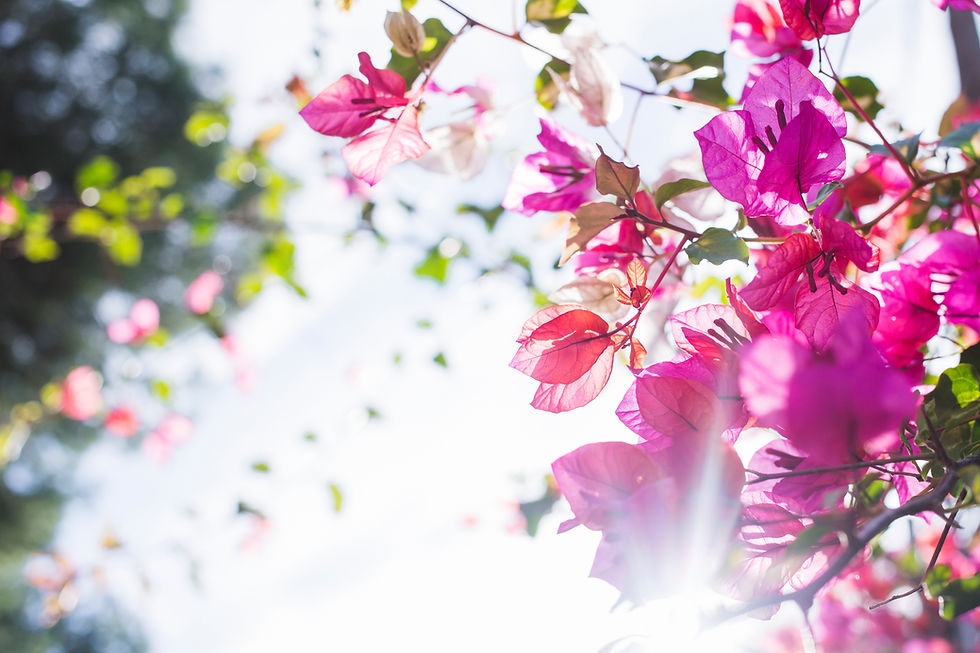SEEING THE WOOD FOR THE TREES IN THE FORESTS OF MAGOEBASKLOOF
- William of the Woods
- Feb 24, 2023
- 4 min read
Countless shades of green converge above you and the only sound is the gentle breeze rustling the living, leafy tips of the ancient wooden giants towering up into the sky around you. These veterans are locked into a slow and patient battle with one another, stretching their branches wide to capture the maximum possible solar energy to power that most fundamental of life-giving chemical reactions - photosynthesis. This quiet, century-paced race for survival between forest trees sets the scene for all manner of critters to play out their life-stories. Across the clearing you spot the crimson flash of a Loerie’s wing, gliding from one tree to the next and the low boom of a Samango monkey’s call vibrates in your ears from deep in the forested valley. Around you, squadrons of insects are buzzing about, too preoccupied with their fight for survival to even notice a human in their habitat. And slowly, the realisation descends that you have been soaking up the transformative experience of an indigenous forest.
It is this engaging, enthralling experience that makes visiting a natural forest so special and moving for most people, regardless of religion, age, gender, political views or whatever it is that drives us apart in daily life. I have yet to meet someone who does not feel at least a tiny bit elated by a stroll through a forest and who does not feel a gentle tug on their imagination when all of their senses are stimulated. If you also want to experience this extraordinary phenomenon, you could not have come to a better place. Welcome to the forests of Magoebaskloof!
So, what exactly is the essence of a forest? Surely it must be the trees? Why do we only see forests scattered in small patches across South Africa like green blobs in a sea of grassland? (or fynbos if you go all the way south to the Cape Provinces) Can it be the soil? The climate? Ancient peoples that planted the first trees before history could record their actions? In fact, there is more to a forest than just the trees. Yes, the tall trees are an obvious feature, but consider that some distinct ecological processes separate forests from other vegetation types. An easy one that most people will readily spot is that forests are very wet – they typically need 900mm or more of rainfall every year to keep on being green. So that is a big factor – forget about forests in dry areas. But still, why do they not cover all the wet parts of the country?
It turns out the second big filter for forests in the landscape is natural disturbance. Let me give you a practical example: savannas and grasslands are maintained by regular disturbances to plants – disturbance like a veld fire, or a big herd of Blue Wildebeest trampling along. In South Africa you will tend to only find forests in kloofs or in mountainous landscapes – places sheltered from such disturbances. Then, there is the question of the soil type… this is an interesting one. Actually, forests don’t seem to be too worried about what type of rock their soil comes from. Forests are so good at producing biomass - they create so much leaf litter - that they form their own soil, very rich in organic matter or carbon. That is why forests are very important from a climate-change perspective, but that is a story for another day.
Would you believe me if I told you that forests are the predominant terrestrial ecosystems on Earth? Get this: 31% of the world’s land area is forest. One third! That is unexpectedly high if you only look at the South African landscape. The best estimates of total forest cover for South Africa range between 3000-5000km2. South Africa covers about 1.2 million km2 – so that means only about 0.4% of South Africa is forest. The size of two Johannesburgs... So clearly, we do not have a lot of natural forests in this country.
It is true that most of the world’s forests occur either around the equator (the tropical or “rain” forests - think Amazon or Congo) or very far north on the globe (the sub-polar or boreal forests of Alaska or Siberia). But here in Magoebaskloof, we are not on the equator nor sub-polar so, our forests can be seen as Temperate (or mild) forests. A global comparison of temperate forest tree species richness shows South African forests to have the second highest number of tree species, second only to the East Asian forests. If species richness is considered per unit area of forest, South African forests have by far the highest number of tree species of any temperate forest in the world.
But we haven’t yet reached the bottom of the biodiversity treasure chest by only looking at the trees. When we consider all the other life forms that live, in, on, among and under the forest trees, we find a wonderful cast of interesting and some very ancient characters. Forests have the highest proportion of threatened vertebrate species of any biome in South Africa: overall, approximately 13% of all forest-occurring vertebrate species are threatened, never mind all the insects! With all of this to celebrate, aren’t you thrilled that you have chosen to visit these very special indigenous African forests here in Magoebaskloof? If you haven’t set out yet, what are you waiting for?! Walk slowly, stop often and look around you. The magic is often in the small stuff and will stay with you long after you leave.
Look out for more tales on the biodiversity bonanza of Magoebaskloof in future editions of the Mountain Getaways.







Comments